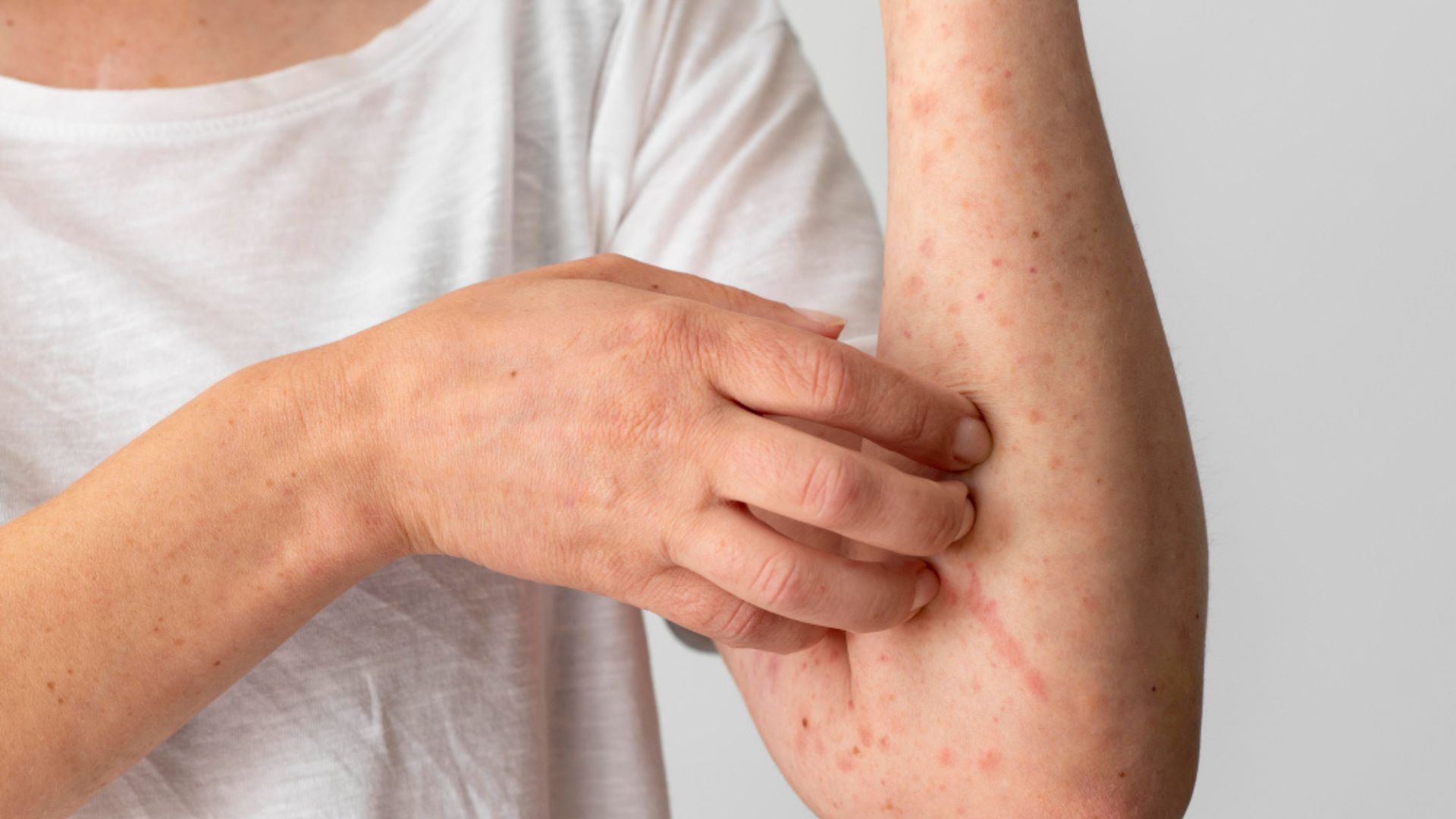

Skin Rashes: Causes, Symptoms, Red Flags and Treatment
Nearly everyone develops a rash on their skin at some time or another. Some rashes resolve quickly. Others last, worsen, or recur frequently. Whether it is an itchy experience or red inflamed patch of skin, rashes can be frustrating, uncomfortable, or even frightening when you are unsure what it is caused by.
Let’s discuss what skin rashes are all about—why they occur, how to know whether you have a bad one, and what you can do for them.
What Is a Skin Rash?
A rash is a change in color, texture, or appearance of the skin. Redness, bumps, blisters, peeling, or dryness can be a rash. Rashes develop all at once or slowly, and can be localized (one area) or generalized on your whole body.
Some rashes are not a problem and will resolve on their own. Some rashes are an indication that something more complicated is occurring inside your body. A skin check near me can help you know the difference.
Common Causes of Rashes on the Skin
There are several reasons why rashes occur. Some of the most common are enumerated below:
1. Allergic Reactions
Being exposed to or ingesting something that your body sees as a threat results in an allergic reaction. These include:
- Certain foods
- Medications
- Pollen or pet dander
- Skin care products or detergents
This tends to result in hives, a red, bumpy, itchy rash.
2. Contact Dermatitis
This is when your skin comes into contact with something that makes it angry—such as soaps, chemicals, plants (poison ivy), or metals (nickel). The rash typically appears right where the contact was.
3. Infections
Fungal, bacterial, and viral infections cause various types of rashes. Some include:
- Ringworm (fungal)
- Impetigo (bacterial)
- Chickenpox or shingles (viral)
4. Autoimmune Conditions
Lupus or psoriasis are diseases that cause your immune system to attack healthy skin, resulting in rashes that are hard to eliminate.
5. Heat rash
Blocked sweat glands will create a heat rash—small, itchy or stinging red bumps, especially on hot, humid days.
6. Eczema (Atopic Dermatitis)
Long-term condition that results in dry, itchy, red skin. It erupts with stress, weather, or irritants such as wool and soap.
Symptoms to Watch For
Rashes can appear on the skin in a variety of forms. The following are some signs:
- Redness or color change
- It can itch or sting
- Blisters, welts, or bumps
- Dry, cracked, or scaly texture
- Swollen or tender
- Oozing or crusting
Occasionally you might find other symptoms, such as a fever or tiredness—especially if the rash is infected.
Red Flags: When to See a Doctor
Most rashes resolve on their own with minimal treatment. Some, however, are a true emergency and need to be addressed by a doctor. Look for these red flags:
- Rash with fever or chills
- Sudden rash all over body
- Open blisters or sores
- Painful rash that doesn’t disappear
- Shortness of breath or swelling of the face/lips (may be an extremely severe allergy reaction)
- Redness, swelling, pus, or red streaks indicating infection
If any of these occur, don’t wait—get medical care immediately.
Diagnosing a Rash
Physicians can usually diagnose a rash by appearance alone and questioning. They will likely ask:
- When did it begin?
- Did you eat or come into contact with anything out of the ordinary?
- Are you on any new drugs?
- Does anything worsen it?
In certain instances, your doctor can conduct skin tests, blood tests, or even a skin biopsy to ensure.
Treatment Options
How you treat a rash depends on what is causing the rash. The following are common treatments:
1. Home Treatments
- Cool compresses: Ease itchiness and swelling
- Oatmeal baths: Soothe itchy skin
- Moisturizers: Particularly for dry rashes such as eczema
- Staying away from triggers: Such as harsh soaps or clothing
2. Over-the-Counter Medications
- Hydrocortisone cream: For minor itch or swelling
- Antihistamines: For allergic rashes (such as hives)
- Antifungal creams: For ringworm or athlete’s foot
3. Prescription Medication
- More potent steroids: For severe or widespread rashes
- Antibiotics or antivirals: For infection
- Immunosuppressants: For autoimmune skin disorders
Never try to self-diagnose a severe rash. What appears to be a minor nuisance can be something else.
Prevention Tips
You can’t escape all rashes, but you can reduce your risk:
- Employ mild, fragrance-free products
- Wash new clothing before wearing it
- Wear loose, lightweight clothing
- Maintain skin hydration
- Avoid known allergens
- Stay cool and dry when it’s hot
- Don’t share personal items or towels
Final Thoughts
Rashes are usual, but that does not mean you can just ignore them—particularly if they hurt, spread, or just won’t get better. Understanding what to look out for will enable you to make judgments about what is minor and what must be treated medically.
Listen to your body at all times. If you have any questions about a rash, it is better to consult a dermatologist or your primary doctor. Skin is your biggest organ—it is worthy of care and respect.

